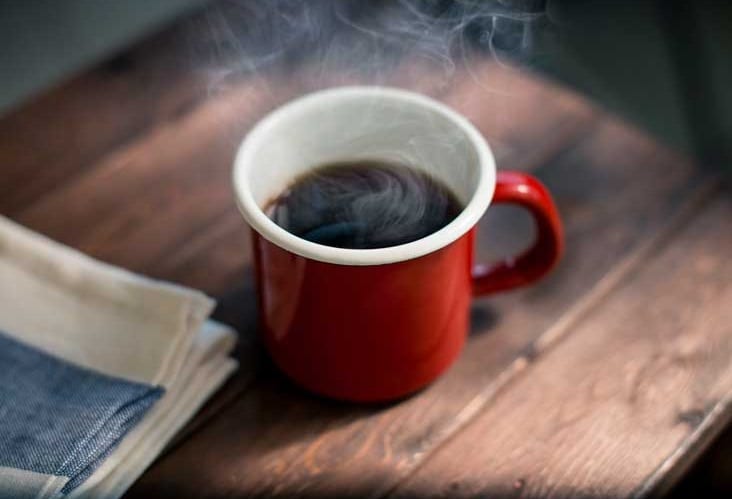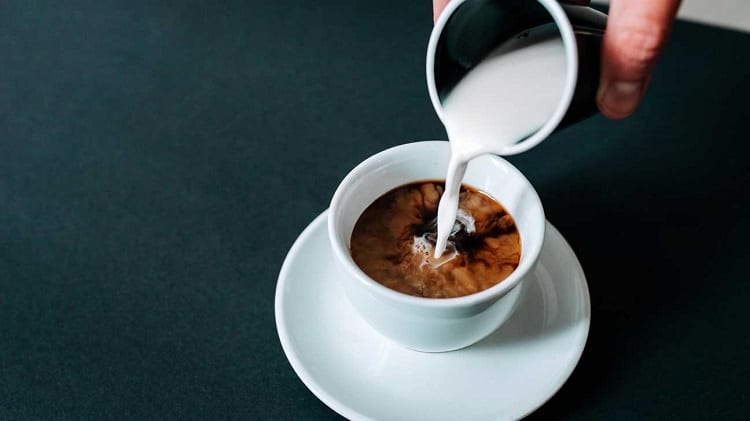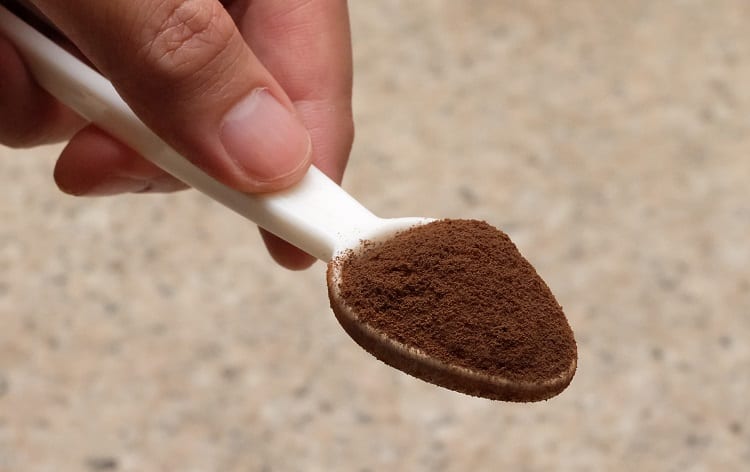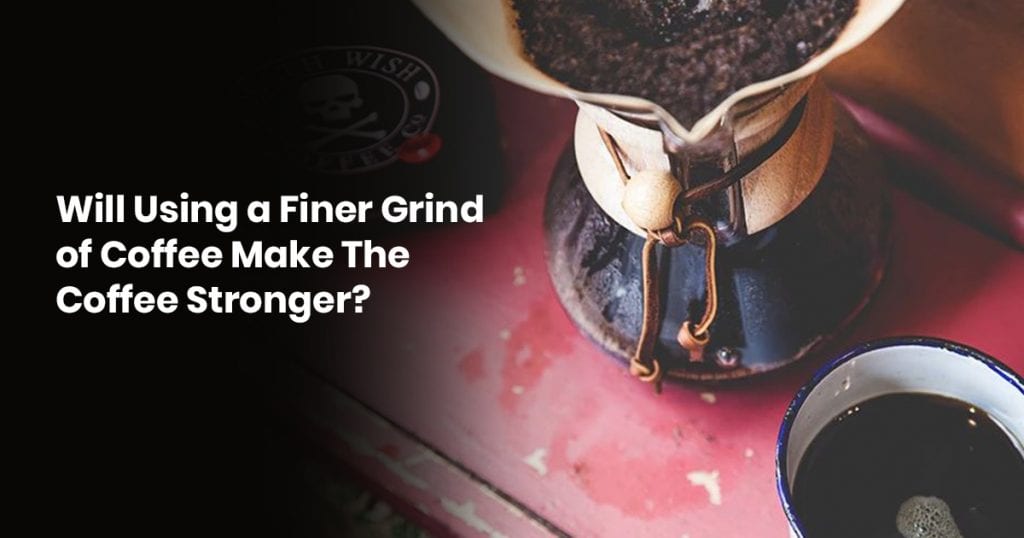It is part of making stronger coffee, but it’s not the only thing that you should be doing.
Strong coffee (sometimes referred to as over-extracted) can be made from multiple brewing methods, each of which requires different grind sizes.
If you want to know how to make stronger coffee, then you first need to approach your brewing methods.
You can use powder-fine grinds to make super-strong coffee through over-extracting, or you can make strong coffee from very bulky grounds that would normally be used in a French press.
Let’s discover all your options.
Different Brewing Methods and Their Impact on Coffee Strength
Brewing Coffee in a French Press
French press coffee is traditionally strong because it’s left to steep for five or more minutes with thick, coarse grinds floating in the water.
French press systems don’t really provide any pressure to the water, but they do steep about as much coffee flavor and caffeine out of your grounds as possible.
French press coffee is made by filling the press with hot water, then add your coffee grounds, and letting it steep.
From that point, you push the plunger down, with forces a mesh disc down through the reservoir, separating the coffee grounds by pushing them to the bottom while the liquid is released through the grate.
Leave this in for longer than five minutes, and so long as it’s hot, you will have stronger coffee.
Brewing Coffee in a Percolator
Percolator coffee can sometimes come off as burnt if you don’t know what the difference between a light roast and a dark roast is.
Percolators use a fine powder, unlike French presses which use a coarse grind, to achieve a stronger cup of coffee.
Think of it as a reverse French press. In this instance, the coffee sits at the top of the system above the water.
A tube runs through the middle of the brew bay and the water reservoir at the bottom, which is being heated.
As heat rises, the water bubbles through the central tube and covers the coffee grounds.
Then it drips back down into the water and is recycled through the tube until you’ve extracted everything you possibly can out of your coffee.
The longer you leave it, the stronger your coffee is going to get.
Brewing Espresso in an Automatic Espresso Machine
Espresso machines require pressure and heat to create strong, dense coffee. If you want strength, as a bold flavor, espresso might actually not be what you’re looking for.
If you want major amounts of caffeine packed into small volumes of liquid, then this is where the train stops.
Espresso is essentially coffee concentrate, so you will get more caffeine per ounce, but it might have a bit of a sweet taste after a while.
Espresso is brewed fairly quickly, so there isn’t much time for it to steep and extract the boldness of dark roast or strong coffee.
How to Make a Strong Cup of Coffee?
If you enjoy the coffee blend you have now, even if it’s a light roast arabica over a dark roast robusta, then you can still make that coffee taste stronger with a few little tricks.
Change the Ratio

If you have three tablespoons of grounds for every nine ounces of hot water, then lower the water amount.
Dial it back until you achieve a taste that you enjoy, even if that means three tablespoons of grounds for just five ounces of water.
From there, if you document it properly, you can increase the ratio depending on the volume of coffee you want to consume.
Just note that doing this will make your coffee higher in caffeine since you’re extracting more caffeine with a higher ratio of grounds.
Go Dark Roast
Dark roast tastes bolder, it’s just a fact (and there are some other facts about it that we’re going to share with you later).
When you go into your favorite coffee house, ask them if they have a dark roast, and give it a shot.
You never know if you’re going to like it or not, so go in with an open mind. Try it both hot and iced to see where your opinion lies.
New Brewing Method
Most of us use drip feed, coffee makers. Well, if that’s the case, invest in a cheap French press and start grinding your own coffee in a coarser setting.
It’s hard to get the strength of coffee that you want if you don’t have the right tools to make it happen.
Percolators are usually used for high volume, but with a French press, you can usually make anything from six to forty-eight ounces in a single go.
Do whatever you feel comfortable with, and as I said before, find that ratio. Try steeping it for longer. Buy a darker roast coffee bean and grind it yourself to get the most flavor out of it.
Should You Add Sugar or Milk?

Not if you want a strong coffee flavor.
Coffee is acidic, even robusta blends, and milk neutralizes acidity.
A glass of milk is actually the number one thing you should consume if you’re having issues with stomach acid, it will calm it all down.
So no, milk would not be good. If you add minimal amounts of raw sugar to your black coffee, it can actually complement the taste while not cutting out the strength.
Processed white sugar and artificial sweeteners will usually alter the strong taste of darker coffee, so if you can avoid them, it’s recommended to do so.
What Type of Beans is Best for Strong Coffee?
Robusta beans are arguably the strongest coffee flavor that you can get, and it’s why they’re not as popular as they should be.
While most people say they drink or enjoy coffee, how many times have you been behind someone in line, and they order something that resembles caramel milk with a splash of coffee in it?
Many people can’t really handle robusta coffee. Caffeine is a major part of coffee, but in arabica coffee, it’s not as detectable.
There’s just 1.5% caffeine in arabica beans, but there’s 2.7% in robusta beans, nearly double the amount.
While coffee doesn’t naturally contain sugar, arabica coffee can be described as a light, acidic, sweeter taste than robusta.
Robusta is earthy, grainy, and sometimes described as having a rubber texture on your tongue.
The thing is, it’s easier to botch a robusta harvest. You can make robusta beans taste excellent if you know what you’re doing, which is why they’re often thrown into the mix of Italian and Spanish coffee blends, who traditionally enjoy stronger-tasting coffee than we do in the United States.
Dark roast robusta coffee will have a stronger, darker taste that can feel rich on your tongue.
You just have to know how to identify the difference between a quality robusta, and common stock. It’s going to take some time to train your taste buds to know the difference.
Is a Finer Grind Better for a Stronger Taste?

A finer grind is better for a stronger taste, as mentioned in our sections on espresso and a percolator listed above.
But the thing is, the grind size only matters so much.
You have brewing methods, which we’ve covered, and you have grind size, which we’ve covered, but roasting also comes into play.
Dark roast coffee tastes bolder. It doesn’t necessarily mean it is better, but it does mean it’s roasted at higher temperatures, and usually for a longer amount of time.
It begins to take on the characteristics of the oil that it produces, which coat the beans.
The acidity is basically burned out of the beans, so you’re left with the remaining elements that make up a bolder flavor.
With less acidity cutting out the flavor, you taste more of the actual coffee.
As a fun fact, caffeine is also burned out of the beans ever so slightly. The darker the roast of your beans is, the less caffeine it has.
This is why light roast coffee is the traditional choice of the west: a light taste that can be masked with flavors and additives, and tons of caffeine that aren’t burned out during the roasting process.
Stronger Coffee is Right Around the Corner
Whether you want espresso, French press coffee, or you want to fire up that percolator, you can get a strong coffee from multiple grind sizes.
If you’re just going for the most caffeine in the least amount of liquid, super fine grinds and pressurized heat from an espresso machine is going to be what you’re after.
Keep in mind that you can make coffee taste strong without necessarily increasing its caffeine content, such as when you use a French press.
Mind your caffeine consumption, and enjoy that strong, bold brew.
